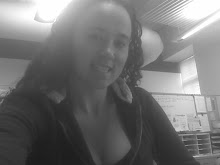But there was still more graphs to be looked at. The next tables are a lot more difficult to explain and understand. We looked at conintuous variables like age, cancer patient monthly volume, breast cancer patient monthly volume, percent of patients who have breast cancer, percent of patients under managed care arrangements, and the time allocated to be with a patient. The numbers/values were determined on a logistic regresssion-which was hard to understand but basically its a way of fitting all the data to a logistics curve, it helps find the probability of occurance. So for our particular study our question would be: what is the probability of satisfied physicians based on age, patient volume, etc etc--all the continuous variables listed earlier in this paragraph. We could still look at the P value for these data tables but another thing Diana said to look at was the Odds Ratio. If the number was less than 1 then the physician had a lower likelihood of being dissatisfied and if the value was greater than 1 then they'll be more likely to be dissatisfied. So we wanted to highlight any table that had a Pvalue less than 0.05 or 0.1 or an Odds Ratio greater than 1. None of our Odds Ratios were greater than 1, but we did have one category that had a P value less than 0.1. It was the time spent with patients it had a Pvalue of 0.076. Diana also showed me the mean and median of the responses the 348 physicians filled out for this question, but I cant remember the exact values for these. I believe the median was 20 or 30 minutes which means over half of the physicians who participated said they spent 20 0r 30 minutes to consult their patients. It ranged from 10-120 minutes-which shows why they were dissatisfied with this part of their job.
Diana and I moved on and looked at more 2x2 tables of the barriers that physicians face when giving referrals in relation to their satisfaction. And we found two variables with P values less than 0.05! One variable was the gatekeeper barrier and the other barrier was the patient inability to pay, with respective P values of 0.013 and 0.028.
And the last data sets were tables similar to the 2x2 tables but it was 4x2 chi^2 table. The question from the survey asked for the availability of various clinicians/services and whether they were 1. within the practice, 2. outside the practice with arrangement, 3. outside with no arrangemnt, or 4. not available at all. We wanted to know if the availability of other services made the physicians more or less satisfied-services such as: primary care doctor, mental health, oncology nurse, physical therapy, nutritionist, care coordinator, patient support group, and home health. None had values that were particularly significant. But there were trends in the tables that as you moved away 1 through 4 the percentage of dissatisfied physicians increased.
And lastly we looked at another 2x2 table that crossed overall physician satisfaction with their satisfaction of the time they were able to spend with their patients. This gave a P value of 0.000!! So they were very much associated without any chance.
Diana and I gathered the significant data and made a brief outline of it all. She said there was still more to do with this information and that we would probably have to talk to the statistician that is apart of this research because we had to make sure that our predictors to our outcome of physician satifaction were exogenous--which means they cannot be predicted by another predictor variable because then other researchers would throw it out as faulty. She said the statistician would have to figure out a programming for our barrier and available services variables and to see if we can look at emergency medical record variables.
Diana asked if I would like to continue on this project with her even though I wouldnt be getting paid anymore since the internship finished today. And of course I was interested, I was even going to ask her if she would mind if I continued to do work with her! I want to get the experience!!
After meeting with Diana I had to go home to complete my blogging, since it was the last official day of the internship.
Overall, I had a really good experience with the PI Pipeline Health Internship. I am so very blessed and pleased to have been apart of the first cohort! :) It was fun and interesting. I met a lot of people. I learned a lot!! And I hope I can continue to grow.
Thank you for EVERYTHING!!

No comments:
Post a Comment